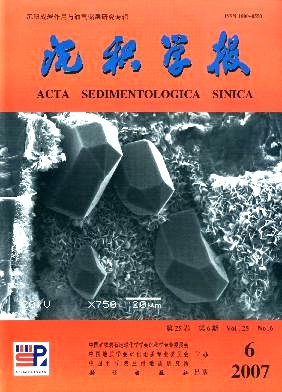Diagenesis of Triassic Feixianguan Formation in Sichuan Basin, Southwest China
- Received Date: 1900-01-01
- Rev Recd Date: 1900-01-01
- Publish Date: 2007-12-10
-
Key words:
- Sichuan Basin /
- Feixianguan Formation /
- dolomitization /
- secondary pores /
- TSR /
- C /
- O stable isotope /
- CO2
Abstract: The proved reserves of sour gas pools were up to 1×1012 m3 from oolitic dolostone reservoirs of Feixianguan Formation in northeast Sichuan Basin,that are mainly distributed in the sedimentary sequence with evaporites. Remnant gypsum and anhydrite , their moidic pores or molds in the reservoirs indicate that the dolomitization was related to the evaporated seawater. Furthermore, in some diagenesis sequence of the reservoirs, the dolomitization extent increases with depth from ancient subaerial exposure surface downwards. This implies that the dolomitization of the oolitic limestone took place in the early stage of diagenesis,and was possibly influenced by mixing rain water and evaporated seawater.
For δ13C and δ18O values between structural constituents of the oolitic dolomite in the reservoirs, the difference is great, so the values of intermix sample of reservoir rock are not suited for dolomitization research.
In the reservoirs , the most oolitic dolostone preserved the remainder of oolitic fabric or original rock framework , the various pores of the dolostone are almost secondary dissolved pores and not shrinkage pores due to dolomite crystals shrink. The replacement process of dolomitization is a volume replacement for volume, not a mole for mole. The relationship between bitumen and secondary dissolved pores indicates that late burial dissolution pores are dominant in the reservoirs .
The ionization constant of H2CO3 is much higher than that of H2S in the solution ,whereas the mole of CO2 is much lower than that of H2S in the sour gas of Feixianguan Formation. The late period calcite cement ,filled in the dissolved pores and fractures of the oolitic dolomite reservoirs, is characterized by low δ13C (-18‰) and high homogenization temperature (130~180℃), so the CO2,related to thermochemical sulfate reduction in the reservoirs , causes mainly late burial dissolution.
| Citation: | WANG Yi-gang. Diagenesis of Triassic Feixianguan Formation in Sichuan Basin, Southwest China[J]. Acta Sedimentologica Sinica, 2007, 25(6): 831-839. |






 DownLoad:
DownLoad: